Be it because of climate change or rapidly developing technology, the face of the world is inevitably changing. In an attempt to stay ahead of the curve and meet the future head on, many nations — mostly in Asia — are investing in planned cities, or cities that are built on purpose rather than through organic growth. Some of these are meant to lead the way in environmental initiatives, others are trying to solve the issue of overpopulation in megacities, and some simply want to show off their new and shiny tech.
Although controversy surrounds many of these cities, there is little doubt that they will shape the urban experience in the years to come. Join the 21st century by getting to know some of the world’s newest cities, as well as cities that are set to debut in the near future.
Note: We may earn money from affiliate partners if you buy through links on our site.
20. Putrajaya, Malaysia
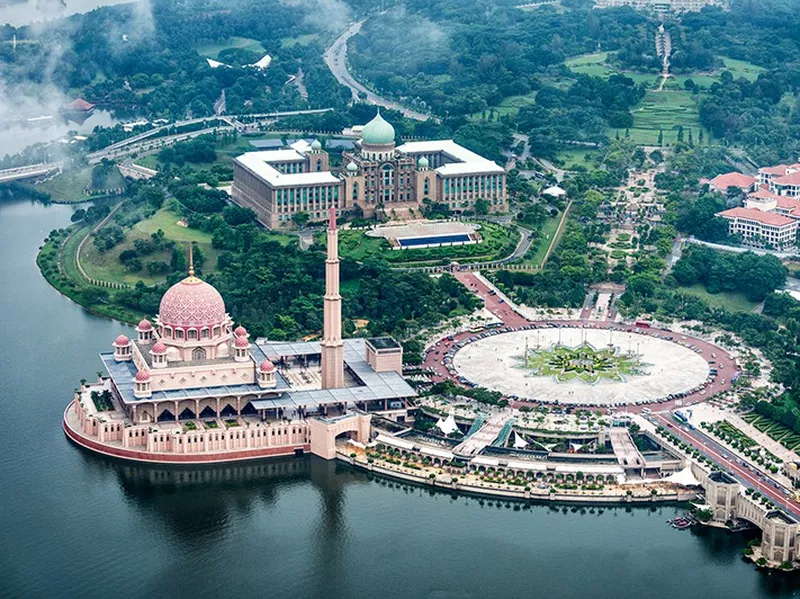
Getty Images
Debuted in: 1995
In the 1990s, Kuala Lumpur buckled under the pressures of overpopulation, so the Malaysian government decided to build Putrajaya and make it the country’s new administrative center. The metropolis was built to be an “intelligent garden city” with a focus on sustainability, ample green space (including 13 separate gardens) and savvy tech features. It is now the location of the Prime Minister’s office, and features attractions like the pink-hued Putra Mosque pictured here.
The city’s population continues to be fewer than 100,000, so the verdict is out on its success. Still, it makes for an intriguing day trip from Kuala Lumpur, about an hour’s drive away.
Where to stay: Zenith Putrajaya
19. Nay Pyi Taw, Myanmar
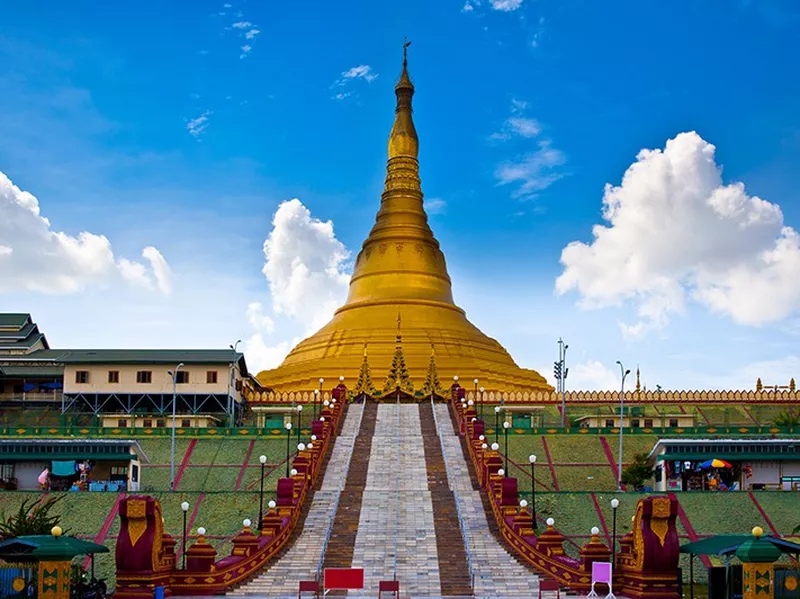
Getty Images
Debuted in: 2003
Although Myanmar has a rich history spanning hundreds of years, its capital city is almost brand-spanking new. Nay Pyi Taw was built in 2003 as a planned city to replace Yangon as the country’s capital.
The city is quite modern and luxurious but continues to be somewhat deserted, with Yangon still serving as the country’s hub of economic activities. Lonely Planet has called the city “soulless,” but it does include a few interesting sights, including the golden pagoda shown here and a small museum devoted exclusively to precious gems.
Where to stay: Park Royal Nay Pyi Taw
18. King Abdullah Economic City, Saudi Arabia
Debuted in: 2005
What’s interesting about King Abdullah Economic City (KAEC) is that it is completely privately funded, making it a sort of for-profit development project.
Work began in 2006 and continues today as more hotels, restaurants and offices are built. With KAEC, Saudi Arabia wants to get in on the strong tourist interest that has fueled the growth of Middle Eastern cities like Dubai.
In its early days, the city has struggled to achieve its ambitious goals (the “Financial Times” described it as “eerily quiet and empty”), but it does contain a smattering of attractions, including spas, golf courses, amusement parks and beaches, plus a few high-end hotels.
Where to stay: Marina apartment
17. Sejong, South Korea
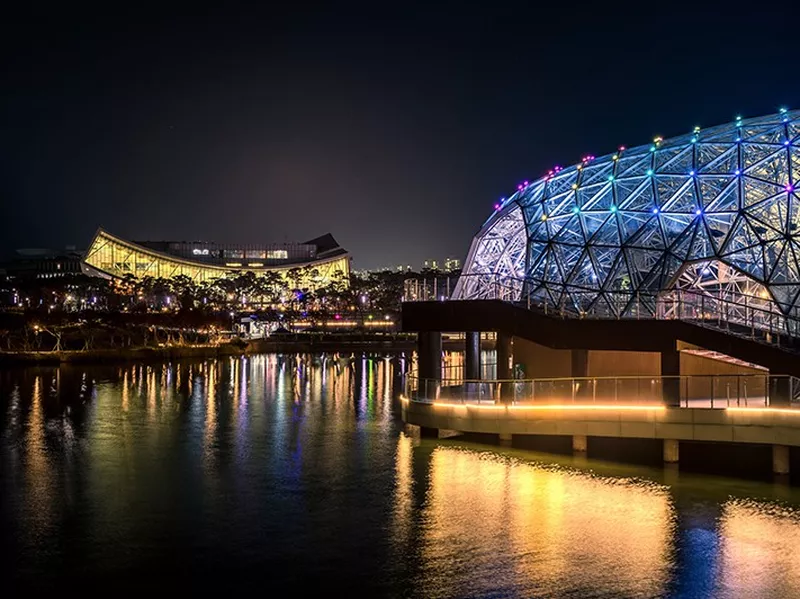
Getty Images
Debuted in: 2007
Named after the most important king of the Joseon Dynasty, King Sejong the Great, this city is an answer to overpopulation in Seoul. As of now, the metropolitan area of the capital is estimated to harbor half of the country’s entire population. To foster economic activity and encourage people to move to Sejong, some government buildings have been moved here.
After a shaky start, Sejong is slowly starting to gain its footing. Visitors can explore the extensive Sejong Lake Park, featuring an island, walking path and stage, and roam around the quiet streets for an unconventional tour of a metropolis finding its way.
It’s pretty easy to get here from Seoul, about an hour-and-a-half drive away.
Where to stay: Sejong City Osong Hotel
16. Rawabi, West Bank
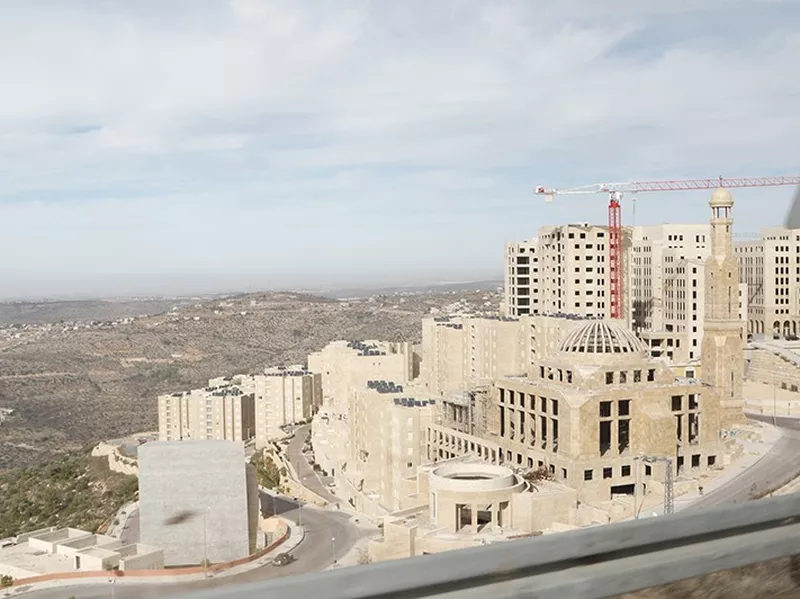
Getty Images
Debuted in: 2010
Given the tense political climate, few would have predicted that Palestine would be the site of a planned city, but Rawabi has defied all expectations. This $1.4 million project is meant to be a beacon of hope for Palestinians, who have started to plant roots here even though construction is very much still in progress.
The city boasts large shopping malls, theaters where patrons can enjoy classic Broadway shows, and modern office buildings, all in a stark desert setting.
15. Duqm, Oman
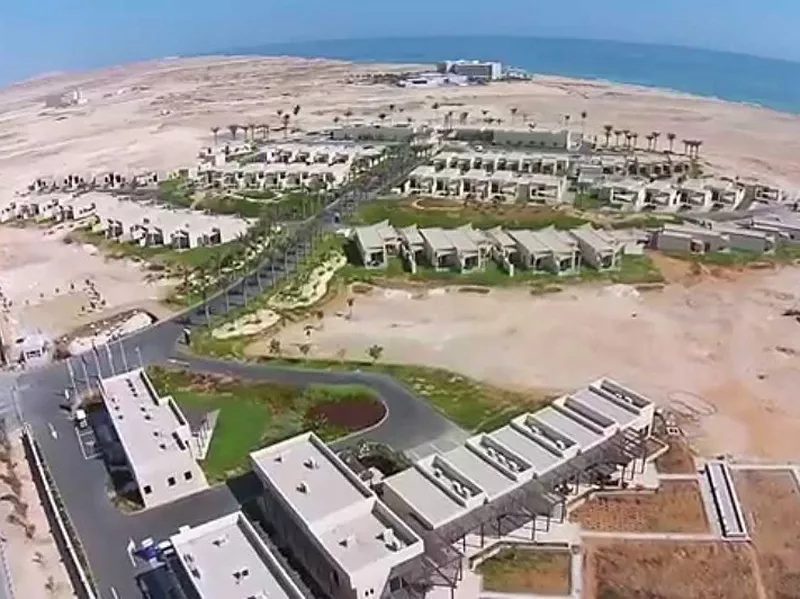
The Special Economic Zone Authority / YouTube
Debuted in: 2011
Duqm — also known as the Sino-Oman Industrial City because it is largely being built with Chinese investment — focuses on the transit industry. The port will be changed into a mecca of energy, with different ventures that exploit oil, natural gas and solar sources. There will also be a car factory and several manufacturing businesses.
Of course, as with any industrial city, there must also be spaces for the people who work in these industries and their families, making schools, hospitals and leisure centers necessary.
Visitors passing through via the country’s coastal highway can check out a quiet beach and a rock garden featuring beautiful sandstone and limestone formations.
Where to stay: Crowne Plaza Duqm
14. Khorgos, China
Debuted in: 2014
This side of the Khorgos economic zone shared with Kazakhstan is in a more advanced stage of development than its counterpart. This is the reason why tourists from Kazakhstan continue to pour across the border to enjoy shopping sprees at the world’s only duty-free shopping center spanning two countries.
The area has attracted attention because of its bi-national free-trade zone, which is predicted to have a massive economic impact. As Khorgos is in what was once on the ancient Silk Road, this spirit of trade seems fitting.
Where to stay: Wenzhou International Hotel
13. Songdo, South Korea
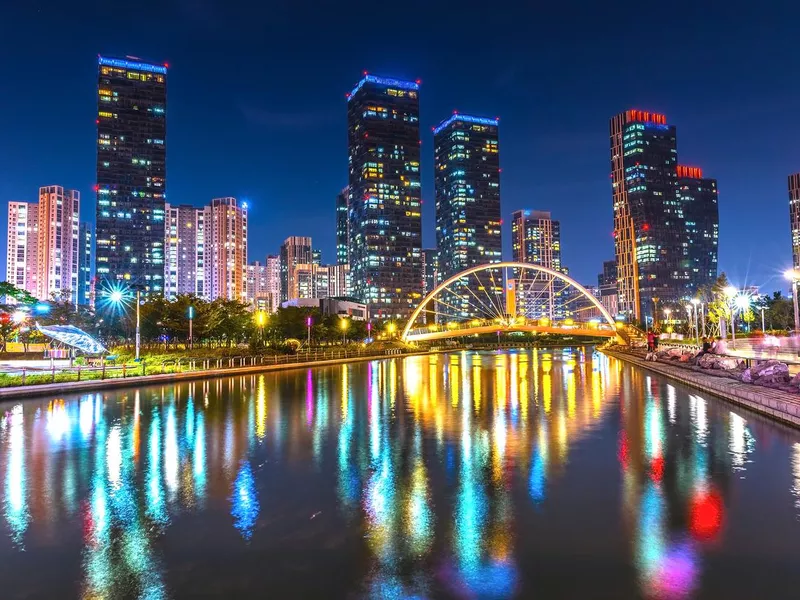
undefined undefined / Getty Images
Debuted in: 2015
Though officially completed in 2015, Songdo is still being developed. As South Korea seeks to be a leader in technology, it is no surprise that environmental efficiency is at the heart of the city’s planning.
Features of the high-tech city include suction tubes that take trash directly to a sorting facility and smart streets that collect traffic data. The city currently has around 80,000 residents but has failed to attract many more because of a lack of attractions and cultural aspects to render it interesting.
Where to stay: Songdo Central Park Hotel
12. Xiong’an New Area, China
Debuted in: 2017
Aanother example of a city built to reduce congestion in a larger nearby metropolis, Xiong’an was designed to offer some relief to overpopulated Beijing. Unveiled in 2017, the city was an economic success almost from day one, and is predicted to soon be one of the country’s major economic zones. It’s also nabbing headlines for its commitment to achieving 100 percent clean power.
There’s not much for visitors to see yet, but plans are in the works for attractions like archeological parks and museums showcasing ancient ruins.
Where to stay: City Comfort Inn Baoding Xiongan New Area
11. Nur-sultan, Kazakhstan
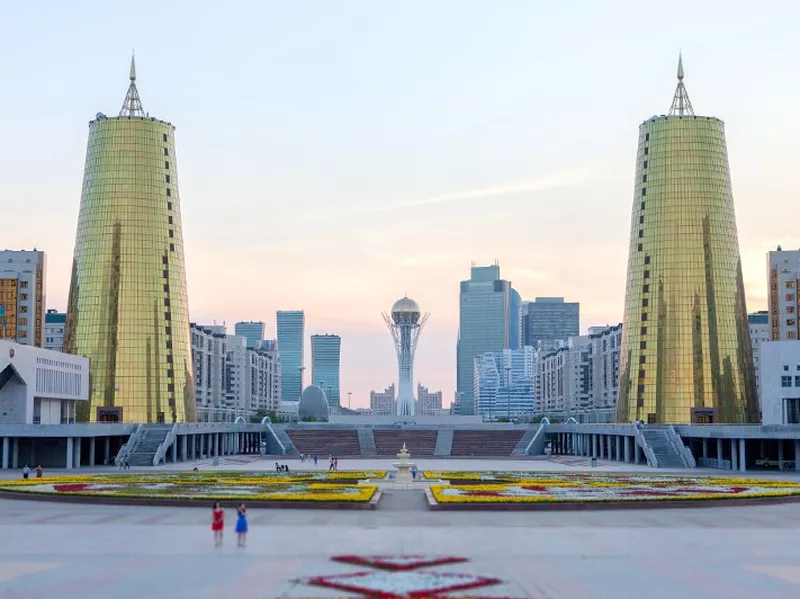
Getty Images
Debuted in: 2019
Up until 2020, the capital of Kazakhstan was called Astana. The city was built by President Nursultan Nazarbayev, who reigned from 1991, when the nation gained independence, until early that year. When he left office, the capital’s name was changed in his honor.
Nur-sultan is marked by sleek modern buildings and futuristic public works, many of which were designed by renowned international architects. The opulent Presidential Palace, one of the city’s major landmarks, touts a spectacular gold and blue palette, and serves as a sign that Kazakhstan is done with the past and pushing forward into the future.
Where to stay: Jumbaktas Hotel
10. Liuzhou Forest City, China
Debuted in: 2020
The developers of Liuzhou City have set lofty goals for themselves. Besides wanting this to be the first “forest city” in the world — meaning it will be entirely covered in plants — they have claimed that it will be completely self-sufficient.
Over the past few years, China has made massive policy changes and invested millions of dollars to combat its dire air-pollution situation. As part of the solution, the city wants to absorb 10,000 tons of CO2 — the equivalent of taking 2,123 cars off the road for a year — and produce 900 tons of oxygen annually. Every building, from apartments to malls to schools, is covered in plants so that nature can continue to thrive along with humans in an urban setting.
While COVID-19 set its debut back, the city reportedly houses about 30,000 people. Of course, it is expected to continue growing.
Where to stay: Wanda Realm Liuzhou
9. Gracefield Island, Nigeria
Debuting in: 2024
Currently being built on reclaimed land just off the coast of Lagos, Gracefield Island is set to be completed in 2024.
The development claims to take environmental planning into account at every level, with the hopes that it will become an eco-friendly hub that can also brag about implementing smart tech. (Are you sensing some common themes with these new cities?)
Ample green spaces, the use of solar energy, and distinctive architecture seek to help Nigeria continue to rise as an international center for technology and innovation, while hopefully luring more visitors as well.
That said, the city does not seem to be developing fast enough for its approaching debut date.
88. Nanhui, China
Debuting in: 2025
Originally set to open in 2020, Nanhui is still in development and is set to be finished by 2025. This planned city is part of the Shanghai Free-Trade Zone designed to revitalize an area that has been somewhat neglected. Of course, if it manages to reroute some business and attract people away from the center of Shanghai, this would also be a benefit.
As part of the plan to incentivize activity, several campuses have been built here. The goal? Bring in a lively student population that will hopefully stay or invest in the city once they have more purchasing power.
7. Forest City, Malaysia
Debuting in: 2035
In Malaysia, yet another plant-covered Forest City is in the works, and its scale is formidable: The metropolis is slated to be the size of four Central Parks and to house some 700,000 residents.
The project claims to put sustainability at the forefront, but has been criticized for causing damages to the surrounding wetlands. Primarily marketed towards Chinese people who’d want a vacation home in a coastal community, the city has not been able to attract as many customers as it would like and remains fairly deserted.
Whether it can recover and achieve its initial goals is up for debate. But the initial parts of the project have delivered something that feels more like a resort town than a “forest city.”
6. Nurkent, Kazakhstan
Debuting in: 2035
Nurkent is one-half of a bi-national economic area being developed between Kazakhstan and China. Its location as the farthest point from the ocean on the entire planet makes it an unlikely place for building a city of the future, but its growth has been impressive. Though construction began recently in 2013, it’s expected to have 250 acres of new residential buildings commissioned over the next few years.
Already, a few thousand people have settled in, and by 2035 it should be functioning as a full city with some 100,000 inhabitants. The dream is for Nurkent to diversify Kazakhstan’s economy while strengthening the country’s diplomatic relations with China.
5. NEOM, Saudi Arabia
Debuting in: 2039
If everything goes according to plan, this mega city (estimated to cost a cool $500 billion) will be 33 times the size of New York City. But rather than be shaped like a regular city, it will be a long line. The idea is to build up rather than spread out. The line will be set in the desert and contained by two gigantic mirrored walls that will seamlessly fit in the surrounding environment.
The plan is for NEOM to run completely on renewable energy, a bold move from a country whose economy notoriously relies on oil. Many have applauded the city as a sign that the world is ready to move on from fossil-fuel reliance and embrace a green future ahead.
Concrete plans have not yet been released, but environmentalists are waiting at the edge of their seats.
Whether the city delivers on its promises will remain to be seen.
4. Colombo Port City, Sri Lanka
Debuting in: 2041
Although this city is expected to be completed in 2041, it is already garnering international attention. As one of several future cities that China is financing overseas, investors are excited for the opportunities that the country’s location will present, though critics believe it may cause tension between India and China. Environmentalists also also concerned about its impact on the surrounding ecosystems.
As of now, plans include an onslaught of attractions such as luxury malls, 5-star hotels and even a Formula One racetrack.
3. Nusantara, Indonesia
Debuting in: 2045
In August 2019, Indonesia made headlines when President Widodo announced that the nation’s capital would move from Jakarta to a yet-to-be-named city in Borneo. This shocking decision is the result of Jakarta’s overpopulation and the fact that it is currently the fastest-sinking city in the entire world.
The move has been criticized for the potential environmental threats to the Bornean Forest that it might pose, even if the government promises it will be (you guessed it) an eco-friendly “forest city.” Many doubt these claims since palm oil farms and overdevelopment already threaten the Bornean forest. Endemic animals such as orangutans and Bornean elephants are at high risk.
Pictured here is President Widodo visiting the area where the city is planned to be built.
2. New Administrative Capital, Egypt
Debuting in: TBD
For over a thousand years, Cairo has reigned as the capital of Egypt, but if everything goes according to plan, it will abdicate the title as soon as next year. The project for a new smart capital in the desert began in 2015, but many were (and continue to be) skeptical about its feasibility. After all, the yet-unnamed capital is set to have massive structures like a park twice the size of Central Park and an amusement park four times the size of Disneyland. The colossal ambition of the proposal has made some investors back out, and the unveiling of the city has already been delayed.
The future capital is not to be confused with New Cairo, another planned city that was built at the beginning of this century that has yet to live up to expectations.
1. Belmont, USA
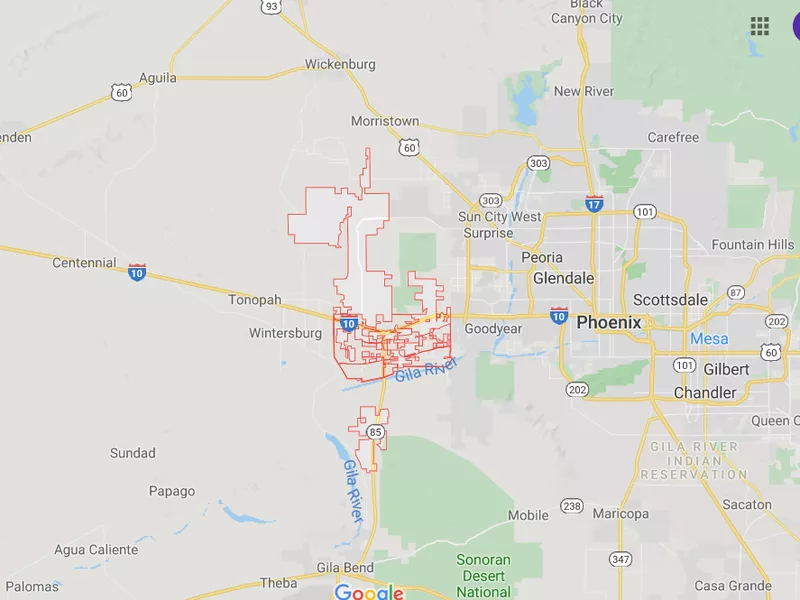
GoogleMaps
Debuting in: TBD
Belmont has gotten a lot of publicity since 2017, when an investment firm that manages some of Bill Gates’ assets decided to invest in it.
Covering part of the Arizona Desert, the “smart city” will reportedly incorporate new technology like self-driving cars and smart traffic lights. Due to its location, Belmont will also be able to partially run on solar energy.
There is no shortage of skepticism about how well this city of the future will actually function, but like other planned cities, it’s still too early to call either victory or defeat.
(Pictured here is the general area where the town is slated to be built.)